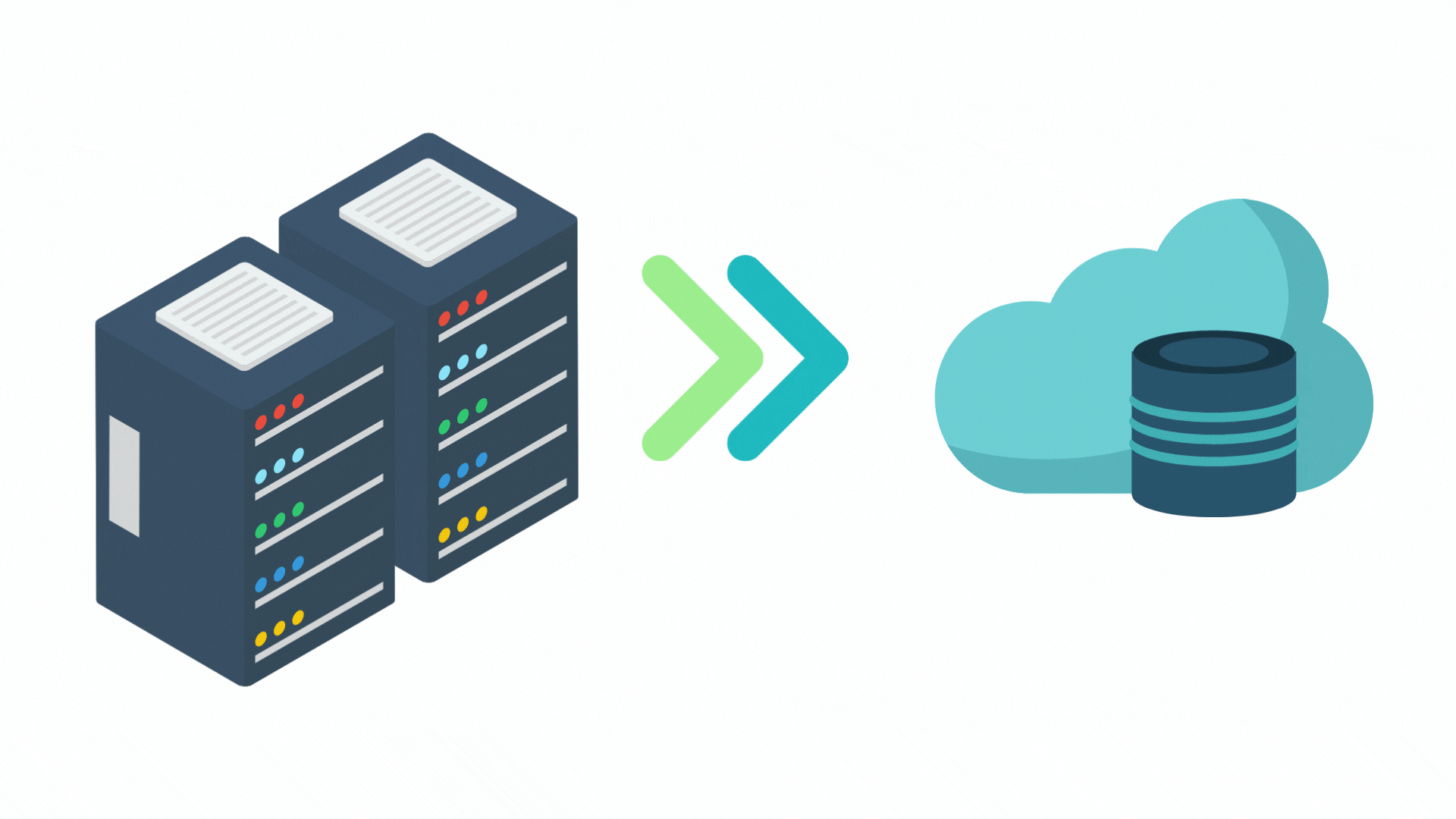Due to the rapid adoption of cloud computing, the importance of seamless data transfer to the cloud has been emphasized even more. As organizations seek to leverage the benefits of the cloud, they face a number of challenges related to cloud data migration that necessitate careful consideration and mitigation strategies.
In our previous discussion, we explored some of the complexities of navigating cloud structures. In this blog post, we are going to delve deeper into the challenges associated with migrating data to the cloud and the strategies to overcome them.
Understanding The Cloud
Before delving into the complexities of data transmission issues, it’s critical to understand the nature of the cloud itself. The cloud is a network of remote servers that store and manage data, apps, and services that are all available through the internet. Its scalability, cost-efficiency, and accessibility make it a tempting option for modern organizations.
Why migrate to the cloud?
The cloud’s attraction arises from its capacity to scale, save money, and be easily accessible.
- Scalability: Cloud services can be readily scaled up or down to meet the demands of a company. Whether you need extra storage, processing power, or resources, the cloud may meet your needs without requiring large infrastructure investments.
- Cost-Efficiency: Organizations no longer need to maintain and manage physical servers and data centers thanks to cloud computing. As a result, costs for hardware, maintenance, and energy consumption are reduced.
- Accessibility: Cloud services are accessible from any location with an internet connection. This kind of accessibility allows team members to work remotely, collaborate, and share data efficiently, regardless of their physical location.
Deployment models
Cloud storage is available in a variety of deployment patterns, including public, private, and hybrid clouds, each with its own set of advantages and applications. Public clouds, such as those provided by major providers such as AWS, Azure, and Google Cloud, are accessible to various businesses but can pose data regulation and handling problems, particularly for businesses located in the EU. Private clouds, which are dedicated to a single enterprise, offer increased privacy and security. Hybrid clouds integrate the characteristics of each, allowing companies to capitalize on each’s strengths.
Cloud Data Migration Dilemma
Cloud data migration is a fundamental component of cloud service adoption. Data is transferred from on-premises servers or local data centers to remote cloud servers. This procedure does not, however, come without difficulties.
Bandwidth limitations
Bandwidth constraints are a key impediment to cloud data migration. When transmitting large amounts of data, bandwidth, which represents the capacity of your internet connection, can act as a bottleneck, resulting in delays and decreased productivity. Mitigating strategies include prioritizing data, employing compression techniques, and utilizing incremental transfers.
STORViX’s AiRE IntelligentFiler, for instance, efficiently addresses bandwidth limitations by employing data compression, much like optimizing luggage for travel. This minimizes data size, optimizing bandwidth utilization for faster, more efficient transfers.
Data security concerns
During cloud data migration, data security is of the utmost importance. Data breaches and illegal access can have serious ramifications, including reputational harm and financial loss. Companies that operate in the EU must comply with legislation such as the GDPR (General Data Protection Regulation).
STORViX addresses these concerns through its integrated data protection features within AiRE. This solution offers robust encryption and the option of storing remote copies across different physical locations. Additionally, AiRE ensures GDPR compliance and data sovereignty by allowing organizations to store and back up data in European data centers.
Downtime risks
Downtime is defined as the time when critical IT systems and services are unavailable or not performing properly. During cloud data migration, downtime can occur for a variety of reasons, including system maintenance, hardware difficulties, or configuration errors. These disruptions can have a domino effect on an organization’s capacity to carry out day-to-day activities. During the transfer process, organizations must maintain continuous availability.
Organizations can use many main tactics to reduce downtime risks during cloud data transfer. These include implementing redundancy and failover systems, as well as guaranteeing both hardware and software redundancy to allow for seamless resource backup in the event of a system breakdown. Scheduled maintenance windows, intentionally designed during low-traffic periods, ensure the availability of important services during critical business hours.
AiRE safeguards against various data corruption scenarios by distributing data across multiple disks and including parity information. This ensures that even in the face of system failures, data remains intact through seamless failover. Furthermore, AiRE’s meticulous approach to data integrity, including checksum and self-repair mechanisms, preserves data consistency throughout the transfer process, reducing the risk of data decay or unnoticed errors in the process of cloud data migration.
Additionally, AiRE’s snapshot functionality facilitates efficient data recovery, enabling organizations to swiftly revert to specific states, minimizing downtime during critical events like malware attacks. Through AiRE, STORViX also offers Disaster Recovery as a Service (DRaaS) as failover and data recovery options in catastrophic failure scenarios, reducing downtime and ensuring uninterrupted business operations.
Compatibility issues
When combining on-premises systems with cloud infrastructure, compatibility issues can occur. These difficulties often present themselves in three important areas:
- Legacy Systems vs. Modern Cloud Infrastructure: Legacy systems’ outdated technology and protocols may not interface effectively with modern cloud environments.
- Data Format and Structure: Differences in data types and structures may demand changes to conform with cloud specifications.
- Application Compatibility: When migrating to the cloud, some applications may have compatibility challenges, often owing to differences in operating systems, runtime environments, or dependencies.
To effectively tackle these cloud data migration challenges, organizations can employ middleware and integration tools that serve as intermediaries between on-premises and cloud systems. These tools make data translation and communication easier while also reducing compatibility difficulties.
Furthermore, enterprises should put comprehensive data validation and verification methods in place. They can reduce disruptions and preserve data integrity before and after the transfer by discovering and correcting compatibility issues early in the migration process.
Practical examples of addressing compatibility challenges include AiRE’s versatile pooled storage approach, adaptable profiles and policies, and centralized fleet management. These features enable customized configurations, fine-tuning storage settings, and efficient control over compatibility adjustments between on-premises and cloud systems. resulting in a smooth process of cloud data migration.

Data Migration Planning
To properly address these difficulties, enterprises must have a well-defined data transfer plan. This strategy should include the following elements:
- Inventory and classification of data: identifying and categorizing data in order to prioritize transfer
- Risk Assessment and Mitigation Procedures: assessing potential hazards and devising mitigation methods
- Creating a Timeline: developing a timeline that matches corporate objectives while minimizing interruption
- Stakeholder Involvement: collaborative decision-making involving all relevant parties
Conclusion
The challenges of cloud data migration are significant, but these constraints can be addressed with proper preparation and the right technical solutions. Bandwidth constraints can be alleviated by agile, high-performance systems, and data security issues can be addressed by encryption and compliance features. Redundancy and failover systems can reduce downtime concerns, and compatibility difficulties can be addressed with solutions that bridge the gap between on-premises and cloud settings.
If you’re looking to streamline your transformative journey in the multi-cloud ecosystem, don’t hesitate to get in touch with us at info@storvix.eu. Our team is here to assist you every step of the way.
Source

